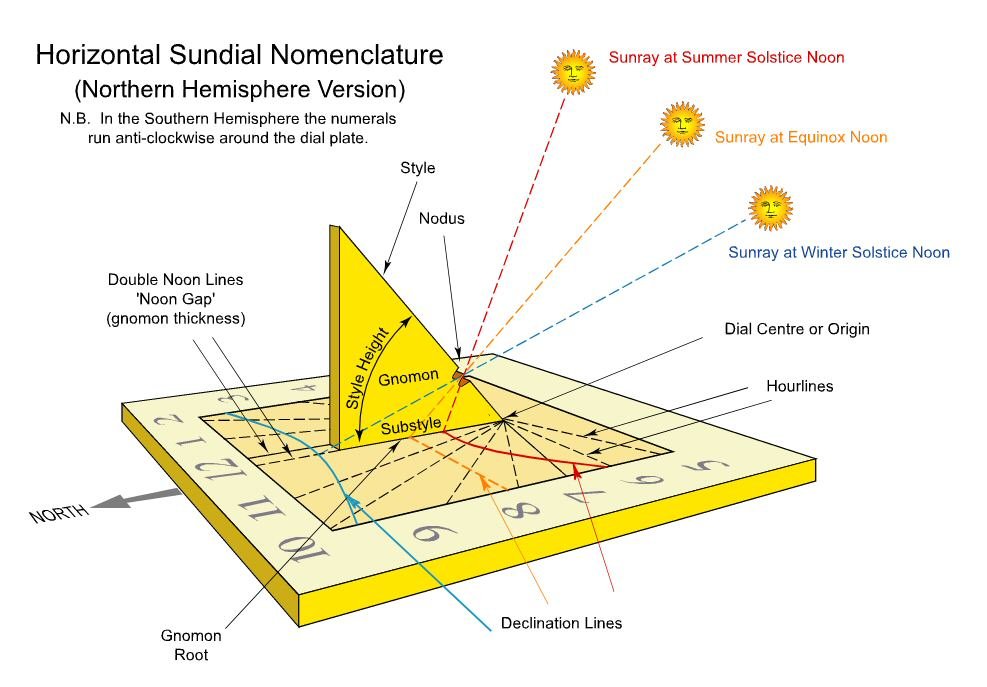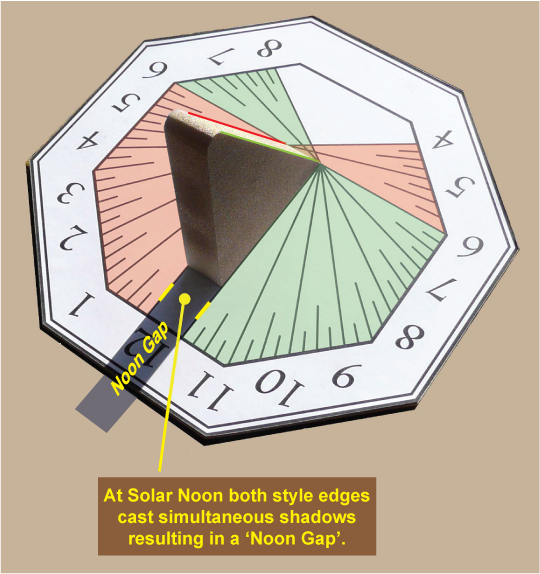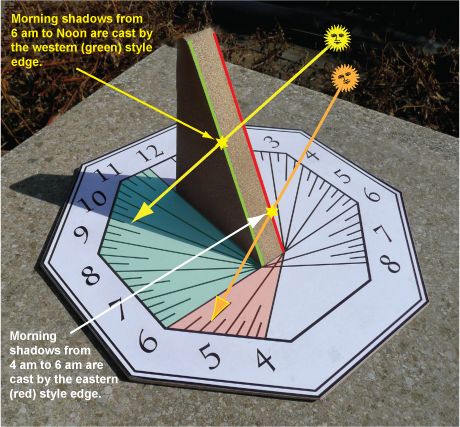- Home
- /
- All About Sundials
- /
- How Sundials Work
- /
- Part 4 - How...
Part 4 - Essential considerations when designing sundials
See the diagram below for the main technical terms for the parts of the sundial.
The triangular part is the 'gnomon', which points North (or South in the Southern hemisphere). The edge of the gnomon - that part which makes the shadow - is called the 'style'. Unless your gnomon is very thin, you will have two styles, one on each side.
Sometimes there will be a point along the style marked with perhaps a notch or a bead. This is called a 'nodus' and as the sun gets higher in summer or lower in winter, the shadow of the nodus will trace a different path each day. These paths are called 'declination lines' and allow the sundial to also tell the date. At the equinoxes the declination lines are straight, at other times they make a parabola. The summer and winter solstices are the extremes - see below for the shapes they make.

When your gnomon has an appreciable thickness (e.g. more than 2-3mm) you need to leave a gap between the noon lines for the width of the gnomon.

Another consideration is that the hour lines for the morning and afternoon don't all radiate from the same point, because after 6 in the afternoon, and before 6 in the morning, the shadow will be coming from the other style to the one used for the rest of the afternoon/ morning.

